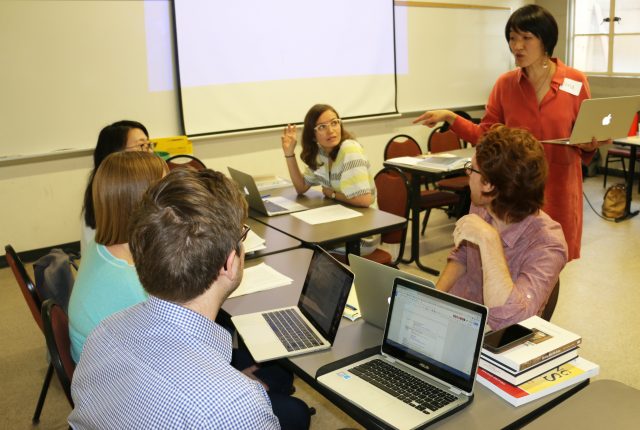
For Teaching Assistants (TAs), regardless of whether this is your first quarter teaching or you have spent several years in a classroom, sharpening your pedagogical skills and learning new techniques is an important part of honing teaching skills in the humanities. While training courses and workshops are certainly core ways to build teaching skills, when you are lesson planning the night before a class or trying to finish a syllabus you’ll probably find yourself in need of more immediately accessible resources. I’ve rounded up 5 great websites that can help expand your pedagogical horizons:

While this site is geared for K-12 teaching, it nevertheless offers great content–from videos to essays to forum threads– on classroom organization, basic skill building, and student stress reduction, among other topics. For example, this video on creating class guidelines helped me to pay more attention to my classroom environment.

Designed specifically for TAs, the resources landing page for CRLT provides information for many issues related to university teaching: teaching with technology; diversity and inclusion; assessment and evaluation; and much more. This article on “flipping a class,” for example, encourages us to use technology to rethink the ways in which we use the classroom as a learning space.

Calisphere describes itself as a “gateway to digital collections from California’s great libraries, archives, and museums.” Containing over 925,000 images, texts, and recordings, it is a wonderful resource both for classes focused on specific media fields and for instructors who want to incorporate other forms of media into their classrooms. I have used this resource to find more information on archives I might want my students at UCLA to visit in Special Collections, as well as to find online images from these collections.

Digital Media and Learning, aka dmlcentral, specializes in providing articles and tutorials centered on incorporating digital media into classrooms. However, it is much more than just a place for technology how-tos; the site covers topics ranging from civic engagement to classroom equity to new media literacies. For example, this article on social media activism and building a syllabus based on the Ferguson, MO protests challenged me to rethink how I incorporate current events into my syllabi and classroom.

The Conference on College Composition and Communication (CCCC) “supports and promotes the teaching and study of college composition and communication.” Regardless of whether your course is geared towards teaching writing skills or whether you are simply concerned about your students’ ability to communicate ideas effectively, this resource is valuable for an instructor in any humanities discipline. This post on “Writing as a Tool for Thinking” gave me great ideas on how to diversify my own writing practices and to think about how I use writing as a tool for learning.
